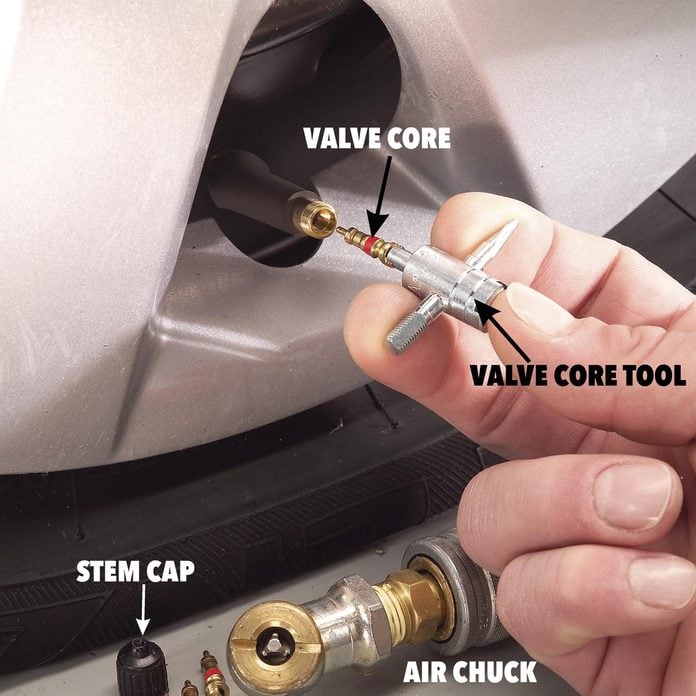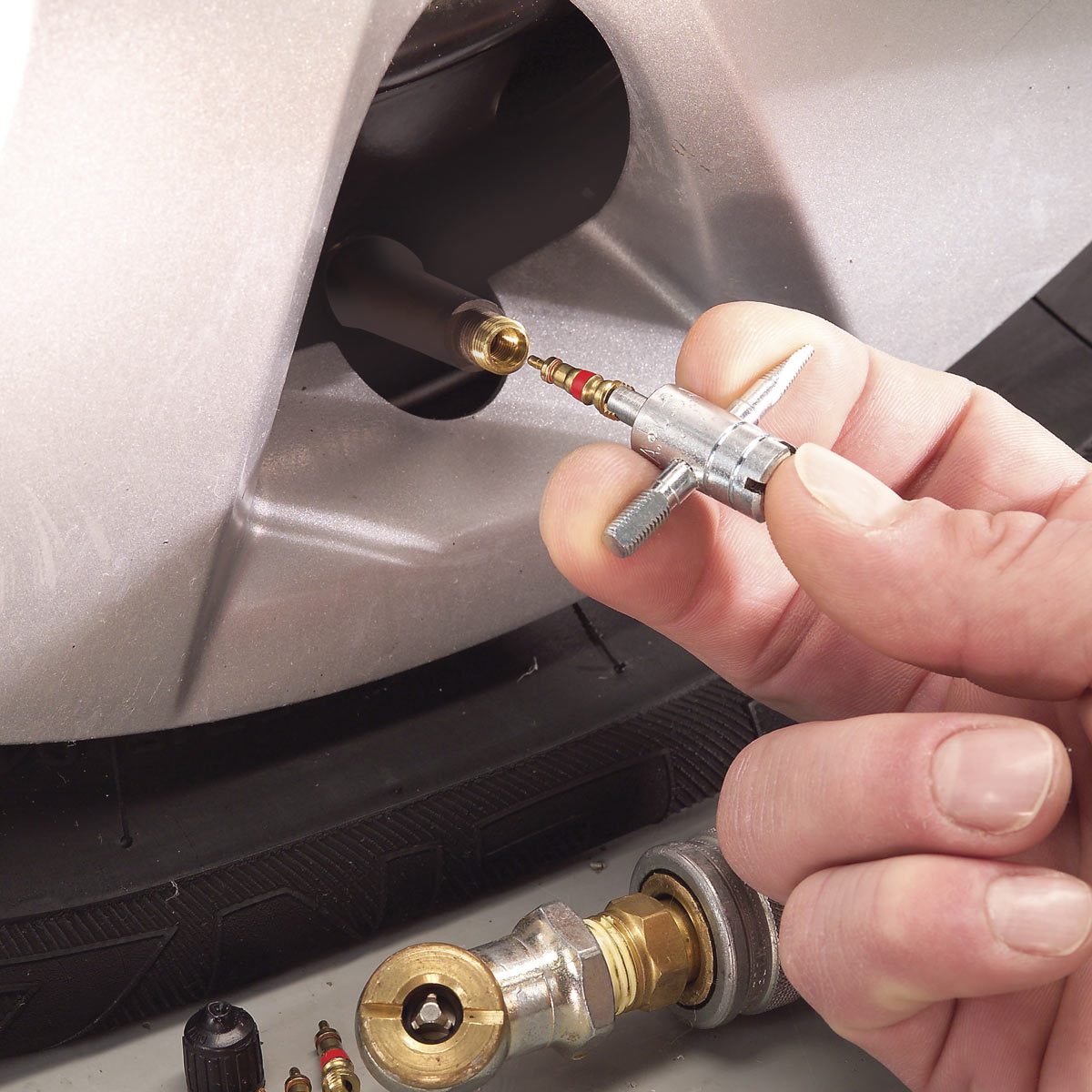How to Fix Valve Stem Leak
To fix a valve stem leak, first, remove the tire, then replace or repair the valve stem. Valve stem leaks can be a common issue with tires that can lead to loss of air pressure and impact the vehicle’s performance and safety.
By addressing the leak promptly and effectively, you can ensure optimal tire performance and longevity. In this guide, we will explore the step-by-step process to fix a valve stem leak and provide insights on preventive measures to maintain tire health.
Whether you are a DIY enthusiast or seeking professional help, understanding how to address a valve stem leak can save you time, money, and potential safety hazards on the road. Let’s dive into the details of fixing a valve stem leak and keeping your tires in top condition.
Causes Of Valve Stem Leaks
Valve stem leaks can be a common headache for car owners, causing frustration and potential safety hazards. Understanding the causes of valve stem leaks can help you take appropriate steps to fix and prevent them. The three primary causes of valve stem leaks are: worn rubber seal, corrosion, and improper installation.
Worn Rubber Seal
Worn rubber seals are a common cause of valve stem leaks. The rubber seal at the base of the valve stem can degrade over time due to exposure to heat, friction, and the elements, resulting in air leakage. Regular maintenance and inspection can help identify worn rubber seals early on and prevent leaks from occurring.
Corrosion
Corrosion is another leading cause of valve stem leaks, typically occurring in older vehicles or in regions with high levels of humidity and salt exposure. When the valve stem becomes corroded, it can lead to air escaping from the tire. Proper care and maintenance, such as regular cleaning and application of corrosion-resistant coatings, can help mitigate this issue.
Improper Installation
Improper installation of the valve stem, including incorrect seating or overtightening, can result in leaks. It’s crucial to ensure that valve stems are installed according to manufacturer specifications, with the use of proper tools and techniques. This can prevent unnecessary wear and tear on the valve stem components, ultimately reducing the risk of leaks.

Credit: diy.stackexchange.com
Identifying Valve Stem Leaks
Valve stem leaks can lead to decreased tire pressure, affecting your vehicle’s performance and safety. By identifying these leaks early on, you can prevent further issues and maintain optimal tire function.
Decreased Tire Pressure
One common indicator of a valve stem leak is a gradual decrease in tire pressure over time. It may cause your tires to appear underinflated, affecting your driving experience.
Visible Damage
Inspect your valve stem for any visible damage, such as cracks or worn rubber. These signs can indicate a potential leakage issue that needs to be addressed promptly.
Leak Detection Solution
Using a soapy water solution, apply it to the valve stem area and look for bubbles which indicate a leak. This simple method can help pinpoint the exact location of the leak for effective repair.
Diy Methods To Fix Valve Stem Leaks
When dealing with a valve stem leak in your vehicle, you can opt for DIY methods to fix the issue. Here are some effective ways to address valve stem leaks on your own.
Tightening The Valve Stem Cap
If you notice air leaking around the valve stem, start by tightening the valve stem cap securely. Ensure it is snugly in place to prevent any leakage.
Replacing The Valve Stem Seal
Sometimes, the valve stem seal may be worn out, causing leaks. In this case, replace the valve stem seal with a new one to restore the airtight seal.
Cleaning And Lubricating The Valve Stem
To prevent leaks, clean the valve stem thoroughly and apply lubrication to ensure smooth operation and a proper seal.
Using A Valve Stem Repair Kit
If the leak persists, consider using a valve stem repair kit specifically designed to address leaks effectively. Follow the instructions provided for best results.

Credit: www.familyhandyman.com
When To Seek Professional Help
Persistent Leaks
If you notice persistent leaks, despite attempting to fix the valve stem, it’s important to seek professional help. Continuing to address the issue without success can lead to further damage and potential safety hazards. A professional can accurately diagnose the problem and provide a lasting solution.
Complex Valve Stem Replacement
For complex valve stem replacements, it’s advisable to consult a professional. These repairs may involve intricate procedures that require specialized tools and expertise. Professional mechanics have the necessary skills and experience to efficiently complete these tasks, ensuring the valve stem is properly installed and functioning.
Lack Of Equipment Or Knowledge
If you lack the necessary equipment or knowledge to effectively address valve stem leaks, it’s best to enlist the help of a professional. Attempting repairs without the proper tools or understanding of the process can result in further damage to the valve stem and related components. Professional assistance ensures the problem is resolved effectively and prevents potential complications.
Preventing Valve Stem Leaks
Valve stem leaks can be a frustrating and potentially dangerous issue for any driver. Not only can they cause the tire to lose air pressure, leading to poor fuel efficiency and compromised handling, but they can also increase the risk of a blowout. Fortunately, there are several preventive measures you can take to ensure your valve stems remain leak-free. In this article, we will explore three key areas of focus: regular tire maintenance, proper installation, and avoiding harsh road conditions.
Regular Tire Maintenance
Regular tire maintenance is essential for preventing valve stem leaks. By following a few simple steps, you can significantly extend the life of your valve stems and reduce the risk of leaks:
- Check tire pressure regularly. Maintaining the recommended tire pressure not only enhances fuel efficiency but also reduces stress on the valve stems, minimizing the chances of leakage.
- Inspect the valve stems for any signs of damage or wear. Look for cracks, dry rot, or bulges. If you notice any abnormalities, it is crucial to replace the valve stem immediately.
- Ensure proper valve cap usage. Valve caps serve as an additional barrier against dirt, debris, and moisture, helping to prevent leaks. Make sure all valve caps are tightly secured and in good condition.
Proper Installation
Proper installation of valve stems is essential to prevent leaks. Ensuring that the valve stems are installed correctly can go a long way in maintaining their integrity:
- Choose high-quality valve stems. Investing in durable and reputable valve stems is the first step towards preventing leaks. Avoid using substandard or cheap alternatives.
- Use the right tools and equipment. When installing valve stems, it is crucial to use the appropriate tools and equipment to avoid any damage during the process. This will help to ensure a secure and leak-free installation.
- Verify the valve stem is properly tightened. After installation, check that the valve stem is securely tightened to the recommended torque. An overtightened or under-tightened valve stem can lead to leaks.
Avoiding Harsh Road Conditions
Driving on rough or harsh road conditions can put additional stress on valve stems, increasing the risk of leaks. Here are a few tips to help you avoid these potential hazards:
- Steer clear of potholes and other road hazards whenever possible. These can cause significant damage to valve stems, leading to leaks.
- Reduce your speed when driving over speed bumps or other road obstacles. Slow and controlled maneuvers reduce the impact on the tires and valve stems.
- Avoid aggressive or sudden braking, especially when driving on uneven surfaces. This reduces the strain on valve stems and minimizes the likelihood of leaks.
By following these preventive measures, you can significantly reduce the chances of valve stem leaks. Regular tire maintenance, proper installation, and avoiding harsh road conditions are all critical in helping you maintain safe and leak-free valve stems. Remember, early detection and prompt action are key to resolving any valve stem issues before they escalate into more significant problems.

Credit: www.familyhandyman.com
Frequently Asked Questions Of How To Fix Valve Stem Leak
Can A Leaking Valve Stem Be Repaired?
Yes, a leaking valve stem can be repaired.
How Do You Stop A Valve Stem Seal From Leaking?
To stop a valve stem seal from leaking, use a high-quality engine oil with additives for older engines. Regularly change the oil and drive the vehicle at higher speeds to help seat the seal. In severe cases, professional repair or replacement may be necessary.
Can You Replace A Valve Stem Without Removing Tire?
Yes, you can replace a valve stem without removing the tire. It’s a quick and simple process that can be done efficiently.
Does Fix A Flat Work For Valve Stem Leaks?
Fix a Flat can work for valve stem leaks by sealing minor punctures temporarily. It is important to repair or replace the valve stem to fix the issue permanently.
How Do You Fix A Valve Stem Leak?
To fix a valve stem leak, you can start by removing the tire, locating the leaking valve stem, replacing it with a new one, and then inflating the tire to the recommended pressure.
What Causes Valve Stem Leaks In Tires?
Valve stem leaks in tires can be caused by issues such as aging, wear and tear, damage from debris, improper installation, or corrosion.
Can You Fix A Valve Stem Leak Without Replacing It?
In some cases, you may be able to fix a valve stem leak without replacing it. By using a valve stem sealant or sealant tape, you can temporarily seal the leak until you can get a replacement.
Conclusion
Fixing a valve stem leak is a straightforward process that can save you time and money. By following the steps outlined in this blog post, you can effectively diagnose and repair the issue, ensuring your vehicle’s tires remain in optimal condition.
Keep these tips in mind to maintain your car’s safety and performance.
